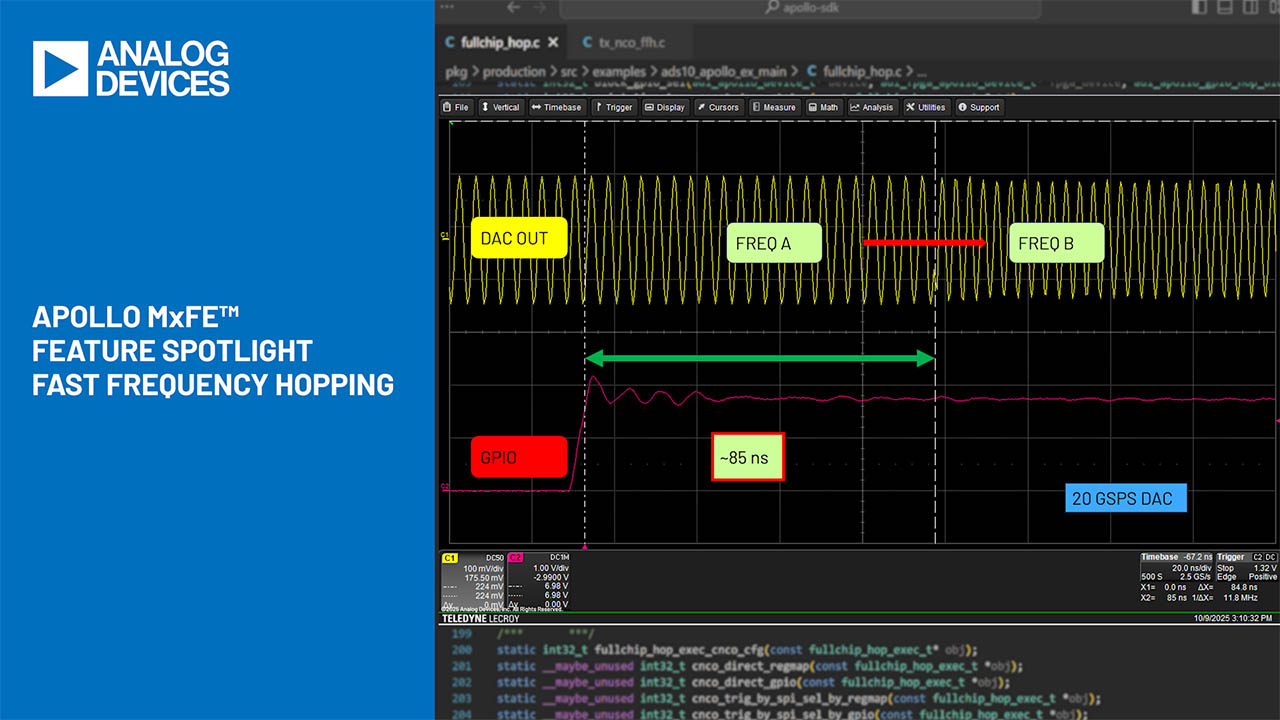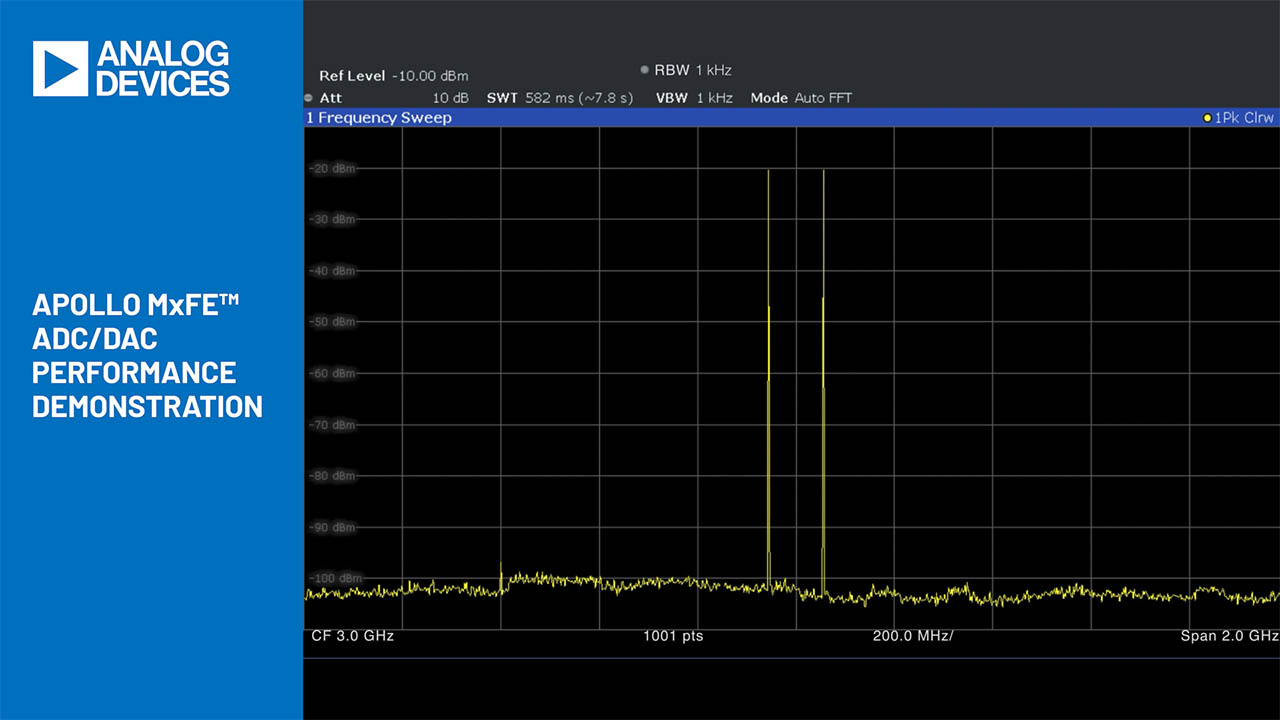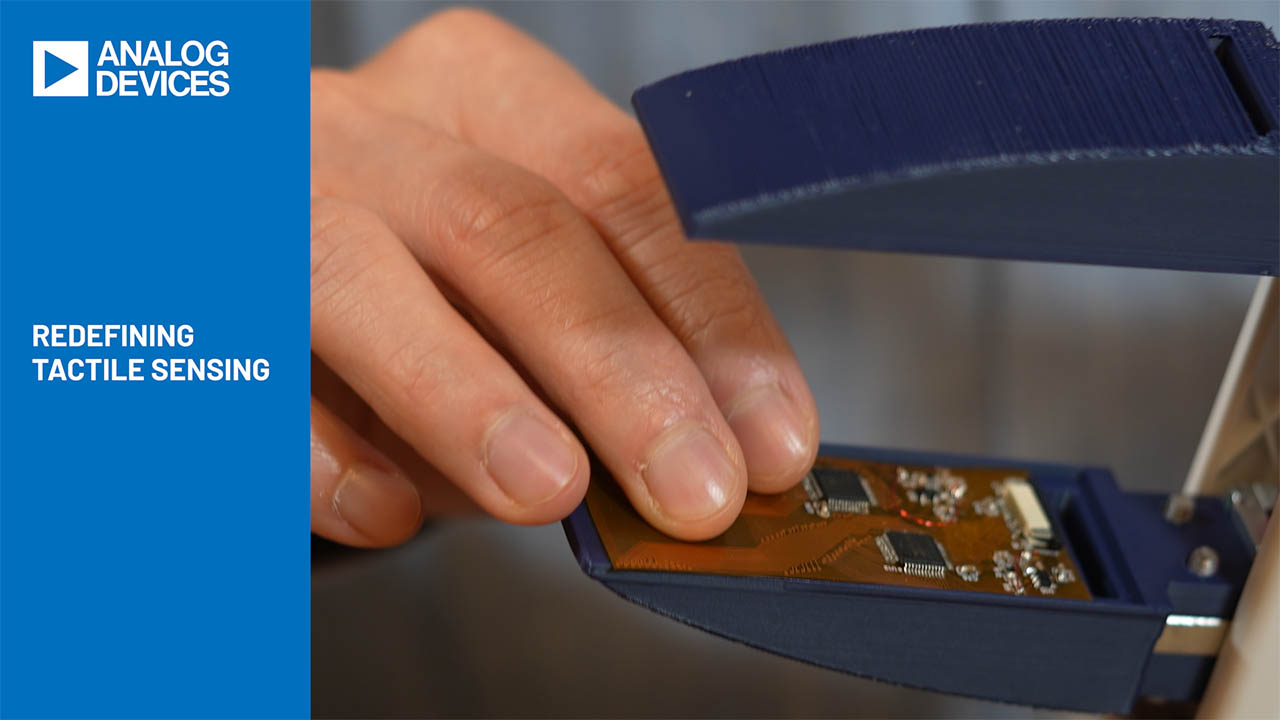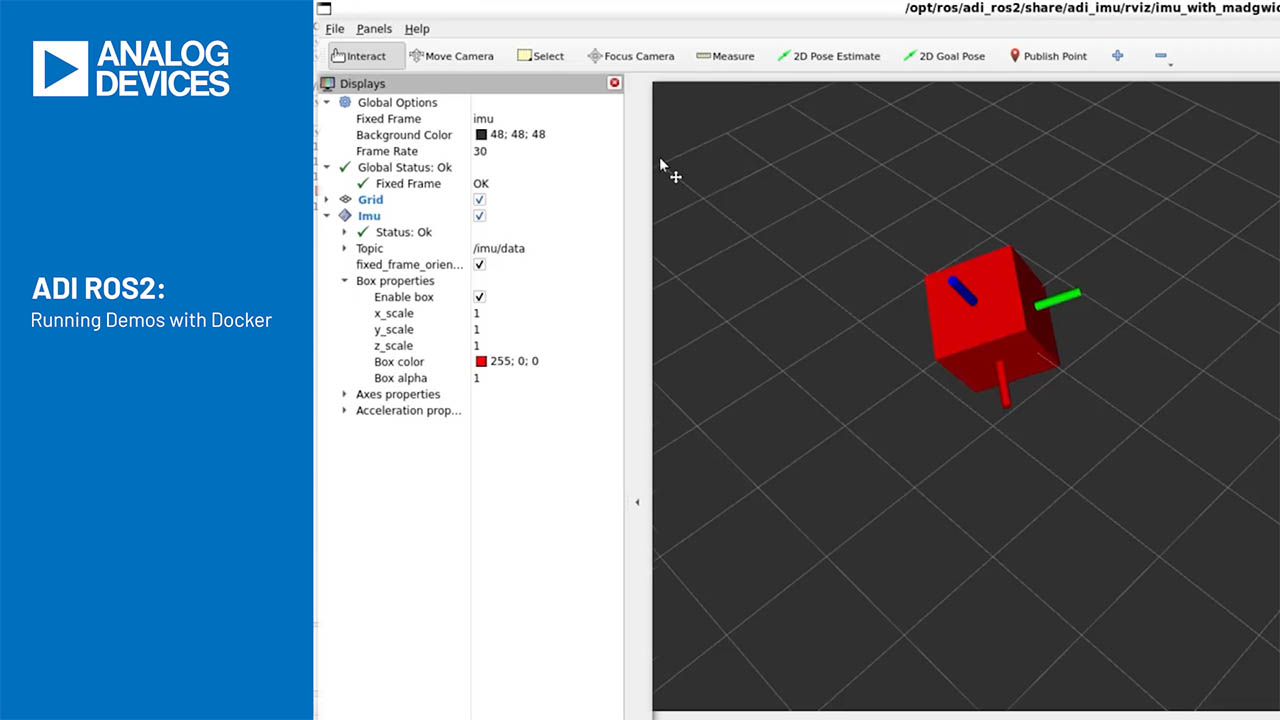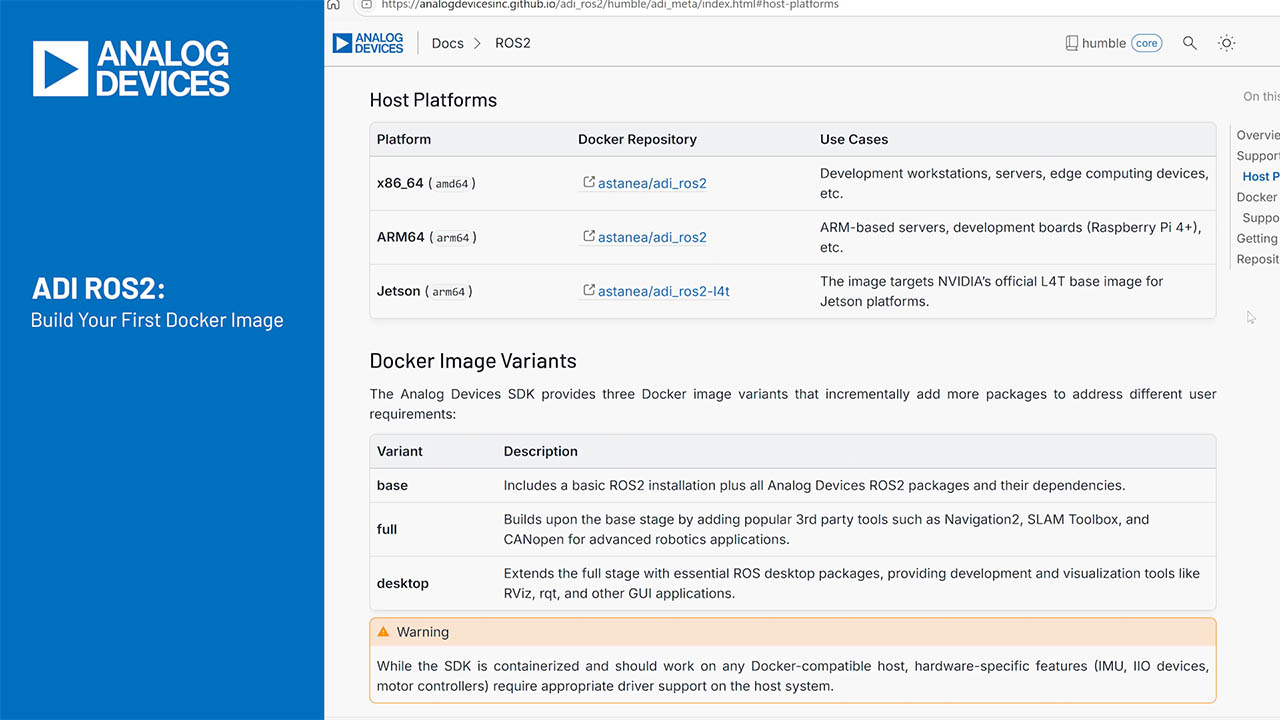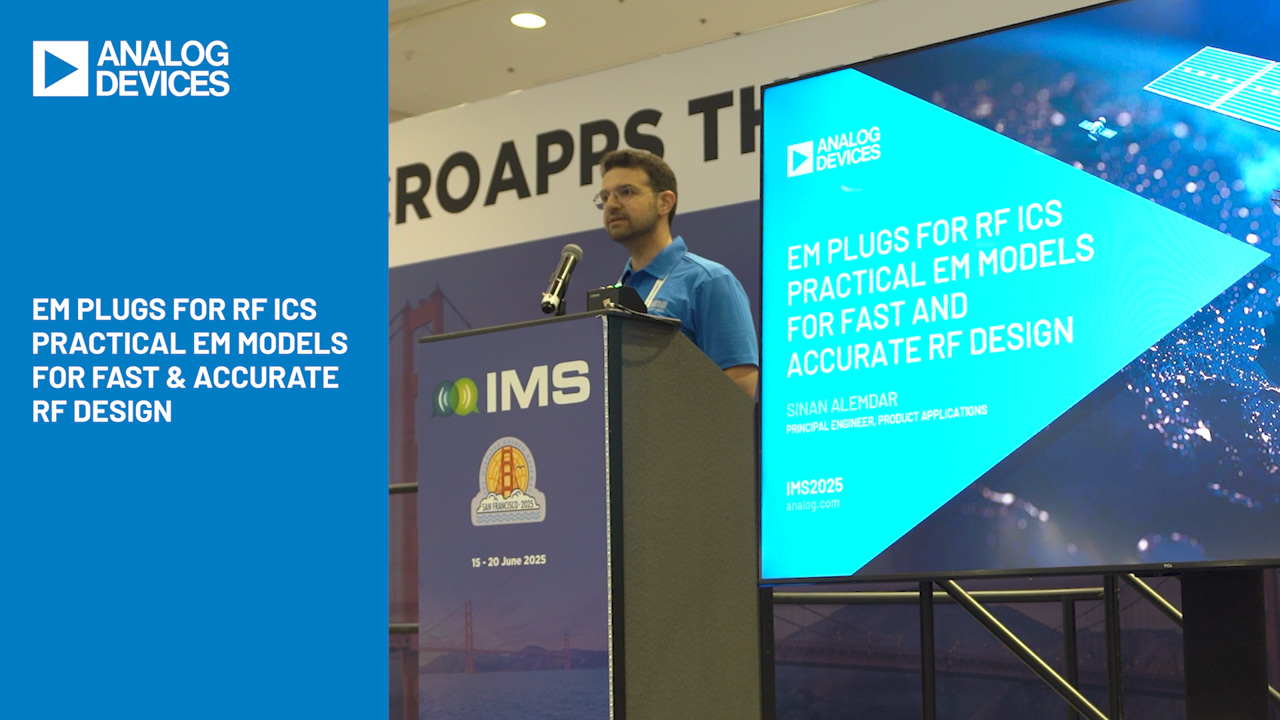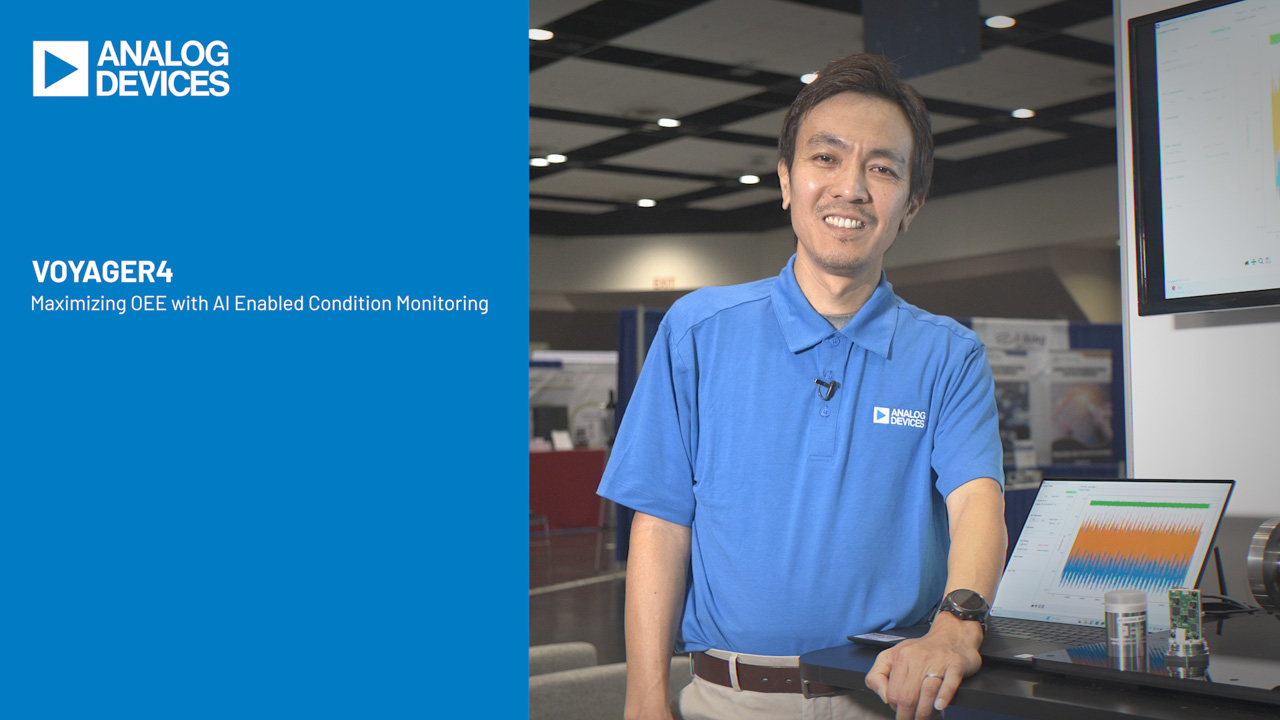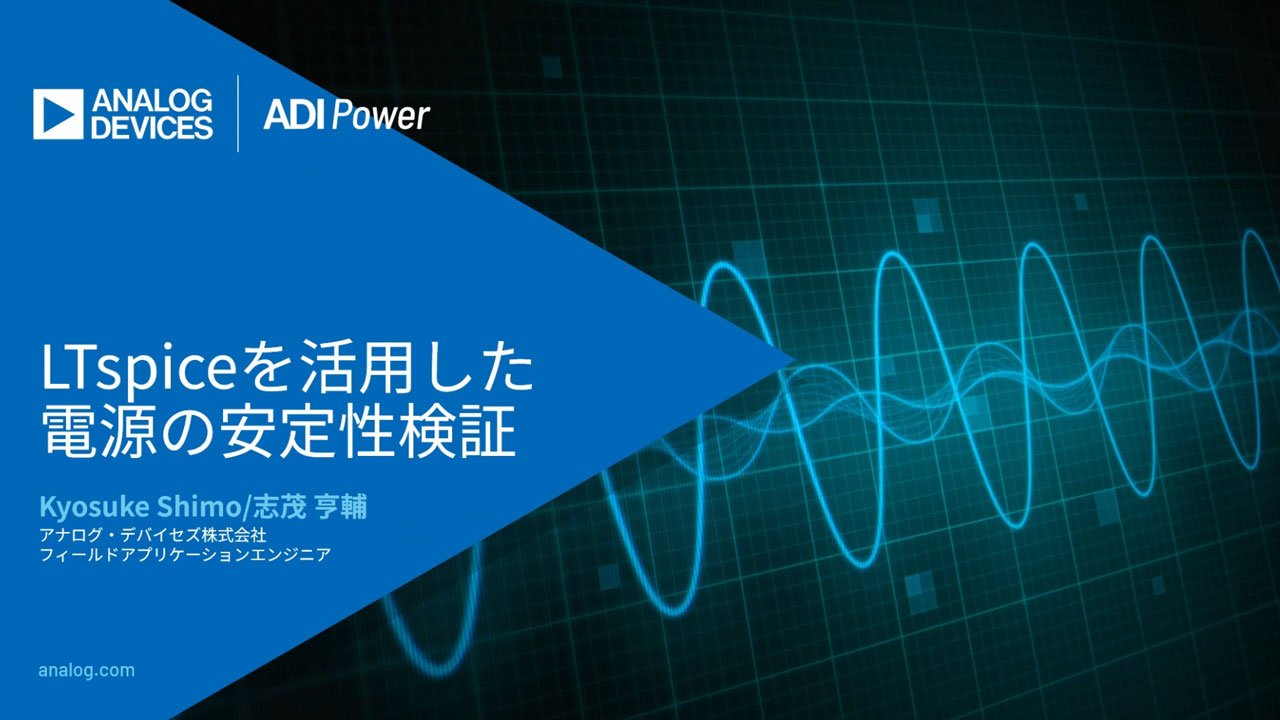電源回路のループの安定性と補償方法について理解する【Part 3】ループを設計/最適化するための3つのステップ
シリーズの関連記事を読む
要約
本稿はこの連載の3回目の記事(Part 3)です。今回は、電流モード制御を採用したスイッチング電源(SMPS:Switched-mode Power Supply)に適用するループ補償回路のシンプルな設計手法を紹介します。電流モード制御のアーキテクチャは、アナログ・デバイセズの多くのパワー・マネージメント・ソリューションで使用されています。このアーキテクチャにシンプルなタイプ2の補償回路を適用すれば、フィードバック・ループの設計/最適化を実施できます。その結果、高速な負荷過渡応答を実現すると共に、安定性を得るための十分なマージンを確保することが可能になります。本稿では、まずループ設計の基本的な考え方について説明します。次に、タイプ2の補償回路についてわかりやすく解説します。その中では、補償に用いる各部品の役割の詳細を明らかにします。続いて、ループ設計のプロセスを3つの合理化されたステップとして示します。最後に、設計ツールとして「LTpowerCAD®」を使用することにより、ループの設計/最適化のプロセスを更に簡素化する方法を紹介します。
はじめに
現在の電子システムの多くは、SMPSを使用することによって高い効率/電力密度を実現しています。ただ、SMPSを使用する場合にはループ補償を実現するための設計を最適化することが非常に重要です。ところが、経験の浅いシステム技術者にとって、その作業は難易度の高いものになる可能性があります。アナログ・デバイセズのほとんどのSMPS製品は、電流モード制御のアーキテクチャを採用することで、高い性能/信頼性を実現しています。図1に示したのは、そうした降圧コンバータの回路例です。この図では、基本的なフィードバック・ループの構成を特に詳しく示してあります1。このアーキテクチャは、電流を検出するためのIC内部のループと出力電圧をレギュレートするための外部のループを備えています。そして、前者のループにより、インダクタの電流を補償回路の出力電圧(ITHのノード)に強制的に追従させます。つまり、概念レベルで言えば、インダクタはループの構成要素である誤差アンプの出力電圧VITHによって制御される電流源として振る舞います。その結果、電流ループを含むSMPSのパワー段は、電流ループの帯域幅より低い周波数ではシングルポールのシステムとして動作します。したがって、SMPSのループの安定性と過渡応答性能を最適化するためには、シンプルなタイプ2の補償回路を使えば十分だと言えます。図1には、そのタイプ2の補償回路の例も示してあります。同回路は、誤差アンプの出力であるITHに接続された抵抗RTH、コンデンサCTH、同CTHPから成ります。
図2は、SMPSのループ・ゲインがどのようにして決まるのかを概念レベルで示したものです。図中のKREFは、電源の出力VOからFBピンまでに至るフィードバック回路(抵抗分圧器)のゲインを表しています。一方、A(s)は、FBピンからITHピンまでに至るループ補償回路(誤差アンプやタイプ2の補償回路を含む)の電圧ゲインです。以下では、このA(s)を補償ゲインと呼ぶことにします。GCV(s)は、ループ補償回路の出力VITHからSMPSの出力電圧VOまでを網羅するパワー段の伝達関数です。これには電流検出用の内部ループも含まれています。SMPSのトータルのループ・ゲインT(s)は以下の式で決まります。

SMPSのループ設計/最適化の目標
SMPSのループを設計する際には、安定性を得るための十分なマージンを確保しつつ高速な負荷過渡応答を実現することが目標になります。そのためには、ループ帯域幅の広い回路を設計しなければなりません。また、SMPSの場合、スイッチング波形のジッタを最小限に抑えるために、フィードバック・ループ内のスイッチング・ノイズを低減することも重要になります。ループを設計する際の主要な目標をまとめると以下のようになります。
- ループ帯域幅(fBW):一般に、高速な負荷過渡応答を得るためにはループ帯域幅が広い方が望ましいと言えます。但し、実際の回路ではスイッチング周波数fSWに起因する制限が生じます。通常、最大帯域幅はfSWの1/10から1/5といった値に設定します。
- 位相マージン:通常、位相マージンは45°以上確保する必要があります。できれば60°以上のマージンを確保することが推奨されます。
- ゲイン・マージン:ゲイン・マージンは、ループの位相が-180°であるときのゲインの減衰量として定義されます。その値としては、少なくとも8dB~10dBを確保する必要があります。
- スイッチング・ノイズの減衰量のマージン:電流モード制御を採用したSMPSでは、フィードバック・ループ内のスイッチング・ノイズを減衰させると共に、スイッチング・ノードの信号波形のジッタを最小限に抑えることが重要です。実際には、fSW/2において8dBを超える減衰量を確保することが望ましいと言えます。
タイプ2の補償回路を直感的に理解する
補償回路を設計/最適化するには、補償用の抵抗やコンデンサの値がループ・ゲインと負荷過渡応答に及ぼす影響について理解しておく必要があります。図3に、タイプ2の補償回路の例を示しました。この回路では、ゲインがgmの一般的なトランスコンダクタンス・アンプ(電圧制御電流源)を誤差アンプとして使用しています。それにより、補償回路には同アンプの寄生出力抵抗R0が加わります。補償回路の本体は、RTH、CTH、CTHPから成ります。ITHピンに接続されるこれら3つの主要なRC部品により、補償ゲインA(s)が調整されます。その結果、SMPSのループのゲイン帯域幅、安定性を得るためのマージン、負荷過渡応答性能が決まります。
補償ゲインA(s)は、以下の式に示すように定義されます。

gmとR0はコントローラICに内在するものであり、それぞれの値は固定です。そのため、補償ゲインA(s)はRTH、CTH、CTHPから成る回路のインピーダンスZITH(s)によって決まることになります。その式は、以下のように表されます。

ここで、上の式の構成要素については以下の式が成り立ちます。

なお、上に示した式の詳細な導出方法については、稿末に示した参考資料1「AN-149: Modeling and Loop Compensation Design of Switch-Mode Power Supplies(AN-149:スイッチング電源のモデリング、ループの補償のための設計)」をご覧ください。
電源の設計者としては、このA(s)の式を暗記する必要はありません。そうではなく、インピーダンスZITHが周波数に対してどのように変化するのかを把握すると共に、補償回路のゲインについて直感的に理解しておくべきです。具体的には、図4のような概念レベルのプロットを描けるようになるとよいでしょう。
図4の概念レベルのプロットを見ると、周波数が低い方から高い方にわたって4つの範囲に分けられることがわかります。それぞれについては、以下のように説明できます。
範囲1:ここで言う範囲1とは、DCから周波数が低い方のポールfP1までの範囲のことです。範囲1において、すべてのコンデンサは高インピーダンスのオープン・サーキットだと見なすことができます。そのため、ZITHの値は、誤差アンプの寄生出力抵抗であるROによって決まります。通常、その大きさはMΩのオーダーの非常に大きな値になります。結論として、範囲1におけるA(s)はほぼ誤差アンプによって決まることになります。具体的には、周波数に対して平坦で、gm×R0によって決まる高いDCゲインが得られます。
範囲2:周波数が高くなるにつれ、CTHのインピーダンスが低下します(CTH >> CTHPなので、CTHPのインピーダンスは依然として非常に高いことに注意してください)。周波数fP1では、CTHのインピーダンスはROと同程度になります。fP1よりも周波数が高くなると、CTHのインピーダンスによってZITHのインピーダンスが決まります。
範囲3:周波数が更に高くなると、CTHのインピーダンスは、最終的に直列パス上にあるRTHと近い値まで低下します。その後、ZITHに対してはRTHの値が支配的になり、この範囲3にわたって平坦な値になります。CTHとRTHのインピーダンスが互いに近い値になるコーナー周波数は、ゼロの周波数fZ1として定義されます。通常、SMPSのループ帯域幅fBWは、この範囲3に含まれるようにすることが目標になります。
範囲4:CTHPはCTHと比べて値が非常に小さいコンデンサであり、RTHと並列に接続されます。周波数が更に高くなると、CTHPのインピーダンスが最終的にRTHと同程度の値まで低下します。その後、ZITHの値はCTHPのインピーダンスによって決まるようになります。RTHとCTHPのインピーダンスが近い値になるコーナー周波数は、より高い周波数に位置する2つ目のポールfP2として定義されます。スイッチング・ノイズを低減することが重要である場合、SMPSのスイッチング周波数fSWと比べてfP2が低い値になるようにする必要があります。
以上の説明から、ZITHの値は、周波数の範囲が変わると、それぞれに異なる抵抗またはコンデンサの値によって決まることがわかります。このことは、各部品がSMPSのループ・ゲインと負荷過渡応答に及ぼす影響について理解する上で役に立ちます。
各部品がループ・ゲインと負荷過渡応答に及ぼす影響
ここまでに説明したように、SMPSの性能は、補償回路を構成する抵抗とコンデンサによって変化します。以下では、それぞれの部品がループ・ゲインと過渡応答に及ぼす影響についてまとめます。
補償用の抵抗RTH
通常、補償回路は、SMPSのループ帯域幅fBWが範囲3においてゼロfZ1とポールfP2の間に位置するように設計します。この範囲では、ZITHの値はRTHの値によって決まります。つまり、fBWはRTHの値によって直接決まることになります。ここで図5をご覧ください。ご覧のように、RTHの値を高くすると、fZ1とfP2の間のA(s)を高めることができます。したがって、図6(a)に示すようにRTHの値が大きいほどループ帯域幅は広くなります。通常、ループ帯域幅が広くなると、図6(b)の負荷過渡応答に示すように、SMPSの出力電圧VOUTのアンダーシュートとオーバーシュートの振幅を低減できます。但し、遷移が生じた後のVOUTのセトリング・タイムはほとんど変化しません。
補償用のコンデンサCTH
一般的な設計において、補償用のコンデンサCTHはfP1とfZ1の間に相当する範囲2のループ・ゲインだけに影響を及ぼすはずです。CTHの値を小さくすると(インピーダンスが高くなる)、範囲2のA(s)が図7のように変化することがわかります。一方、CTHを小さくしても、図8に示すようにループ帯域幅に影響は及びません。また、負荷過渡応答においてVOUTのアンダーシュートとオーバーシュートの振幅はそれほど変化しないことがわかります。ただ、CTHの値を小さくすると、低い周波数でも高いゲインが得られることになります。そのため、遷移が発生した後のセトリング・タイムは短くなります。

補償用のコンデンサCTHP
通常、CTHPとしては、高周波に対応し、等価直列抵抗(ESR)と等価直列インダクタンス(ESL)が小さく、小型の製品が選択されます。CTHPは、フィードバック・ループ内の高周波のノイズを減衰させるために使用されます。それにより、SMPSのスイッチング波形がクリーンで低ジッタなものになります。この特性は、電流コンパレータの入力におけるノイズに敏感な電流モード制御のSMPSにとって有用です。CTHPとしては、CTHよりもはるかに値が小さいものを選択します。つまり、CTHPの効果が、高い周波数(範囲4)だけで発揮されるようにします。SMPSのループ・ゲインに関して言うと、CTHPはfSW/2において目標となる8dB以上の減衰量を得ることに役立ちます。図9は、CTHPの値を大きくすることにより、高い周波数におけるゲインA(s)を低減する効果が得られる様子を表しています。図10に、CTHPの値を大きくした場合の各種応答を示しました。CTHPの値を大きくすると、高い周波数におけるループ・ゲインが低下し、高周波のノイズを低減できるようになります。CTHPをかなり小さい値に保つ限り(CTHP << CTH)、ループ帯域幅と負荷過渡応答に影響は及びません。
3つのステップから成る補償回路の設計プロセス
ここまで、ループ補償回路のZITHを決める要素について適切かつ直感的に理解できるように解説を進めてきました。その内容を踏まえれば、目標とする特定のループ帯域幅に対し、タイプ2の補償回路を適切に設計することができます。そのプロセスはシンプルな3つのステップから成ります。実際の作業は、電源設計ツールであるLTpowerCADを使用するか、実験室で計測装置を使用してボーデ線図を取得することによって進めるとよいでしょう。以下、各ステップについて説明していきます。
【ステップ1】目標とするループ帯域幅に対するRTHの値を設定する
概念レベルで言えば、目標とするループ帯域幅fBWに対するRTHの値は式(1)を用いて直接計算することができます。ループ帯域幅(クロスオーバー周波数)において、ループ・ゲインの大きさは0dB(つまり1)なので次式が成り立ちます。

したがって、RTHの値は以下のようにして導出することができます。


一般的なコントローラICを使用する場合、実際にはGCVの値を推定するのが困難なケースもあるでしょう。その場合、アナログ・デバイセズのLTpowerCADを使用すると便利です。LTpowerCADは、パワー段とループ補償の最適化をサポートする電源設計ツールです2。実際の設計作業では、まず同ツールのループ設計のページを開き、CTHとして非常に大きな値をプリセットします(図11)。一方、RTHには小さな値を設定しておきます。そして、目標のループ帯域幅が得られるまで徐々にRTHの値を増加させていきます。それにより、最適な値を見いだせます。先述したように、電流モード制御では、60°以上の位相マージンを確保すべきです。それを満たせない場合には、RTHの値を下げて60°の位相マージンが達成されるまでループ帯域幅を狭めましょう。

LTpowerCADを使用するのではなく、実験室で計測装置を使用してボーデ線図を取得する方法でも同様の結果を得ることができます。その場合も、CTHに大きな値を設定し、RTHの値を非常に小さな値から徐々に大きくしていきます。そのようにして実測を行いながら、目標とするループ帯域幅と位相マージンが得られる値を見いだします。
【ステップ2】ノイズを低減することが可能なCTHPの値を設定する
このステップでも、LTpowerCADまたは実測によって必要な値を求めます。スイッチング・ノイズを低減させるために、fSW/2におけるループ・ゲインが-8dBを下回るまでCTHPの値を0から増加させていきます(図12)。また、SMPSのゲイン・マージン(位相マージンがゼロのとき)としては8dB~10dBを確保する必要があります。
【ステップ3】遷移に対するセトリング・タイムが短くなるCTHの値を設定する
ステップ3では、CTHとして非常に大きい値をプリセットします(図13)。そして、位相マージンが顕著に低下し始める(fZ1がループ帯域幅に近づいていく)までCTHの値を下げていきます。CTHの値を小さくすると、負荷過渡応答におけるセトリング・タイムを短くすることができます。但し、CTHの値が小さすぎると、最終的には電源の位相マージンに影響が及ぶようになります。45°~60°の位相マージンが確保されるよう注意しなければなりません。
【ステップ4(オプション)】抵抗分圧器にコンデンサを付加して位相ブーストを実現する
このステップはオプションです。CTH、CTHP、RTHの値を調整しても、目標とするループ帯域幅と安定性を確保するためのマージンが得られないケースもあるでしょう。その場合にこのステップを踏みます。具体的には、フィード・フォワード・コンデンサCFFとフィルタ用のコンデンサCFLTを追加することで、抵抗分圧器を対象として更なる調整を加えることが可能になります。CFFを使用する目的は、目標とするループ帯域幅の近辺で位相ブーストを実現することです。これは、LTpowerCADのループ補償のページにおいて、「Feedback」タブを選択することで実行できます(図14)。この図には、抵抗分圧器に付加するコンデンサが適切である場合の例と不適切である場合の例を示しています。優れた設計を行えば、目標とするループ帯域幅の周波数において最大の位相ブーストが得られます。

LTpowerCADによるワンクリック・ループ設計、更なる簡素化が可能に
LTpowerCADは、上述した3ステップの設計方法に基づいて、ループ補償用の設計をワンクリックで自動的に行う機能を提供しています。この機能を使えば、設計作業が更に簡素化されます。同機能を使用する場合、まず目標となるループ帯域幅(通常はスイッチング周波数の1/10~1/5)を設定します(図15)。そして、「Use Suggested Compensation」のチェックボックスにチェックを入れます。すると、LTpowerCADは、良好な位相マージンを確保しつつ、目標となるループ帯域幅を実現可能なRTH、CTH、CTHPの値を提示してくれます。但し、目標とするループ帯域幅または位相マージンを達成できない場合には、ループ帯域幅の周波数を下げなければなりません。その場合、「Use Suggested Compensation」のチェックボックスのチェックを外してワンクリックの設計機能を無効にします。そうすれば、ループ帯域幅と負荷過渡応答の設計と微調整を手作業で行えるようになります。
まとめ
本稿では、一般的な電流モード制御のアーキテクチャを採用するSMPSに適用するループ補償回路を設計/最適化する方法を紹介しました。本稿で説明したとおり、その設計/最適化はシンプルな3ステップの作業を行うだけで完了します。特に、LTpowerCADを使用すればリアルタイムに結果を得ることができます。更に、同ツールのワンクリック・ループ設計機能を使用すれば、設計/最適化のプロセスを大幅に簡素化することが可能になります。
参考資料
1 Henry Zhang「AN-149 : Modeling and Loop Compensation Design of Switch-Mode Power Supplies(AN-149:スイッチング電源のモデリング、ループの補償のための設計)」Analog Devices、2015年1月
2 Henry Zhang「AN-158F:LTpowerCAD設計ツールを使用して5つの簡単な手順で電源パラメータを設計」Analog Devices、2015年9月
Henry Zhang「電源回路のループの安定性と補償方法について理解する 【Part 1】基本的な概念、利用可能なツール」Analog Devices、2022年1月
Henry Zhang「電源回路のループの安定性と補償方法について理解する 【Part 2】異常/問題のあるボーデ線図」Analog Devices、2024年6月
















